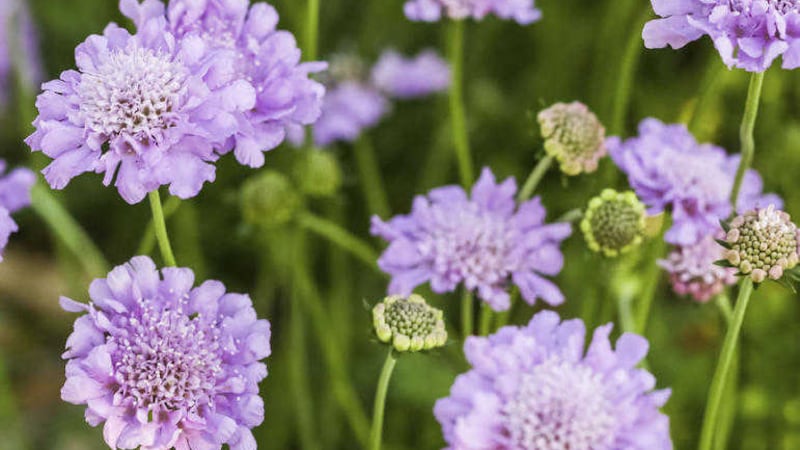IN A few weeks’ time it’s likely this column will bring you advice on maintaining your lawn in the autumn. It’s a hardy annual, if you will, a piece of advice I can take down from the shelf and roll out at what’s normally a quiet time for most gardeners, and consequently for a gardening columnist.
But before boring you with my maintenance tips for this bastion of conservative gardening, first let me tempt you with something more daring – and a little wilder.
This year, rather than knocking your pan in with scarifying and aerating in pursuit of the perfect sward, why not devote your energies to helping biodiversity and creating something much more arresting than an expanse of single-shade green?
Native wildflowers have been in decline for the best part of a century and these days tend to be limited to peripheral, neglected areas or places that have been deliberately set aside for native flora.
I’m not suggesting you dig up your prized lawn and turn it into a wildflower meadow – though please feel free – but rather give a strip or section over to some native wildflowers.
But before you assume that this would involve a degree of neglect and therefore cut down your workload, think again. Creating and maintaining a native wildflower patch involves as much labour as a lawn, only it’s a different kind of work.
For established wildflower beds maintenance at this time of year involves mowing.This is vital as it stops vigorous grasses swamping the more timid flowers. With an established bed, mowing is delayed until the plants have gone to seed before they are cut and left for a few days to allow the seed to fall off. Raking up the cuttings will shake off most of the remaining seed and ensure it makes its way to the soil for germination.
If creating a new bed/meadow – which depends on the grass to flower ratio – then now’s the time to sow seed on light soils. The site should be cleared of all weeds, with perennials dug out, and sown with a mix of grass and flowers.
Personally, I’m planning to sow a strip on the edge of a hard-wearing lawn where daffodils come up in spring. Where ordinarily scutch grass, buttercups and the aforementioned daffodils grow, I’ll soon scatter scabious, poppy, cornflower and oxe-eye daisy seeds, that I plan to collect from the wild. A practice that should only be carried out for personal benefit rather than financial gain, collecting local wild seed ensures you get the species best suited to your area.
General protection is given to all plants under the Wildlife (Northern Ireland) Order 1985, though this legislation is largely designed to protect them from destruction rather than amateur seed harvesting.
A rule of thumb is to harvest the seed around two months after flowering when the seed head has dried and turned brown. Choose a dry, still day and take from plants that were/are healthy and vigorous.
The conscientious gardener will carefully select single seed heads or stalks and lay them out somewhere warm, such as a hot press or windowsill, before extracting the seed. My more cack-handed approach is to take a brown paper bag and put the upturned seed head inside and agitate it to ensure the seed falls out.
Whichever method you employ be sure to get rid of any additional debris as this will only harbour mold and the like. And don’t forget to label them.
When to sow the seed depends on the species. Helebores, for example, are best sown straight away or they lose their vitality, while poppies can remain viable for hundreds of years.








